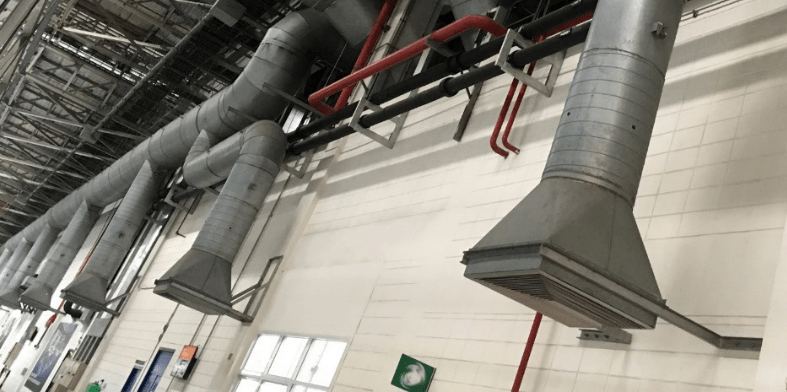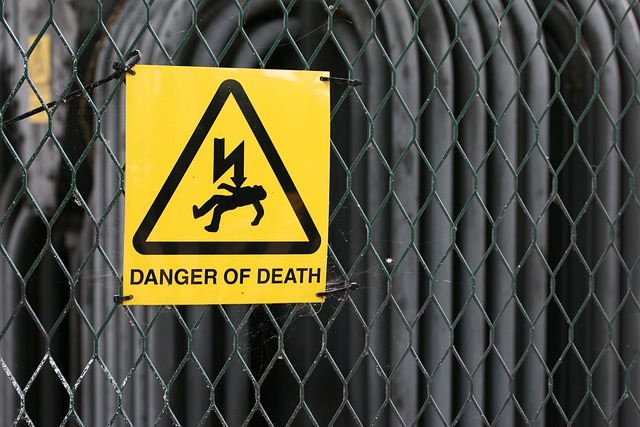Honestly, anytime you’re dealing with machinery or equipment, it’s crucial to know the risks. But it’s especially vital for those in charge of maintaining workplace safety or for anyone tasked with cleaning or servicing an LEV system. By understanding the risks and how to manage them, you’re not only protecting yourself but also ensuring a safer environment for everyone.
LEV stands for Local Exhaust Ventilation and by definition, it’s a system designed to take away airborne contaminants like dust, mist, fumes, or gases from a workplace. Think of it like a super vacuum cleaner that ensures workers aren’t breathing in harmful stuff. It’s common in places like factories, workshops, or labs.
Risk assessment for cleaning of LEV fan involves identifying potential hazards associated with the task and evaluating the risks associated with those hazards. The assessment also includes determining control measures to minimize or eliminate the risks.
Understanding the risks associated with cleaning an LEV fan isn’t just a one-off thing. It’s crucial in several situations, and here’s why:
- Regular Maintenance: LEV systems need routine cleaning to function correctly. If they’re not cleaned regularly, they can become less efficient, meaning they won’t remove contaminants as well. So, anyone involved in the regular upkeep of these systems needs to be clued up on the risks.
- Workplace Safety Protocols: If you’re in charge of safety in a workplace, you need to know about all potential hazards. This knowledge ensures that safety protocols are up-to-date and that everyone is trained correctly. It’s not just about the person doing the cleaning; it’s about everyone in the vicinity.
- New Installations or Upgrades: If a workplace is getting a new LEV system or upgrading an old one, understanding the cleaning risks is essential. This helps in planning where the system should be placed, what safety equipment might be needed, and how often maintenance should occur.
- Training New Staff: When new employees join, especially if they’ll be involved with the LEV system in any capacity, they need to be briefed on the risks. This ensures that from day one, they’re aware of the safety protocols.
- Incident Response: If something goes wrong, like an LEV malfunction or a related accident, understanding the risks associated with cleaning can help diagnose the issue. Was the fan not cleaned properly? Were safety protocols followed? Knowing the risks can help answer these questions.
- Legal and Compliance Reasons: In many places, there are legal requirements for workplace safety. Being well-informed about the risks of cleaning an LEV system can help ensure that a workplace remains compliant with these laws, avoiding potential fines or legal actions.
- Employee Assurance: Workers feel more at ease when they know that safety is a priority. By understanding and addressing the risks associated with cleaning an LEV fan, employers can foster a sense of trust and assurance among their staff
In short, risk assessment for cleaning of LEV fan is essential for a variety of reasons, ranging from day-to-day safety to long-term workplace planning and compliance. It’s always better to be informed and prepared

Risk Assessment for Cleaning an LEV Fan:
Cleaning an LEV fan is more than just wiping off some dust. Because of its job (remember, it’s sucking up all those contaminants), there are some specific risks involved
- Identification of Hazards:
- Electrical hazards: Before you start, make sure the fan’s power is off. Risk of electrocution if the fan is not properly isolated.
- Falling objects: As you clean, dust and debris might fall out. It’s a good idea to wear a hat or cap and maybe even some safety goggles.
- Working at height: If the fan’s up high, you’ll need to climb. Always use sturdy ladders or platforms and never overreach. There’s a risk of falls.
- Exposure to contaminants: Dust and other contaminants from the fan can be inhaled or come into contact with the skin.
- Manual handling: Lifting or moving heavy equipment or tools.
- Slips, trips, and falls: Wet or slippery surfaces after cleaning.
- Sharp edges or components: Risk of cuts or abrasions.
- Chemical exposure: If using cleaning agents, there’s a risk of exposure.
- Evaluation of Risks:
- Assess the likelihood and severity of each hazard. For instance, if the fan is located at ground level, the risk of working at height is eliminated.
- Control Measures:
- Electrical hazards: Ensure the fan is isolated from the power source before cleaning. Lockout/tagout procedures should be followed.
- Falling objects: Wear protective headgear. Ensure the area below the work zone is cordoned off or has warning signs.
- Working at height: Use appropriate access equipment like scaffolding or elevated work platforms. Ensure workers are trained in working at height and use safety harnesses where necessary.
- Exposure to contaminants: Wear appropriate PPE like dust masks, safety goggles, and gloves.
- Manual handling: Use proper lifting techniques. Use equipment or get assistance if the item is too heavy.
- Slips, trips, and falls: Clean up any spills immediately. Use non-slip footwear.
- Sharp edges or components: Wear gloves and be cautious when reaching into or around the fan.
- Chemical exposure: Use appropriate PPE, such as gloves and safety goggles. Ensure the area is well-ventilated. Follow the manufacturer’s instructions for using cleaning agents.
- Review and Monitor:
- Regularly review the risk assessment, especially if there are changes in the procedure, equipment, or location.
- Monitor the cleaning process to ensure that control measures are being followed.
- Training and Communication:
- Ensure all workers involved in the cleaning process are trained in the identified risks and control measures.
- Communicate the risk assessment findings with all relevant parties.
- Emergency Procedures:
- Ensure that there are procedures in place for emergencies, such as electrical faults, chemical spills, or injuries.
Remember, this is a general risk assessment, and the specific risks and control measures may vary based on the exact nature of the LEV fan, its location, and other site-specific factors. Always consult with health and safety professionals when conducting a risk assessment




